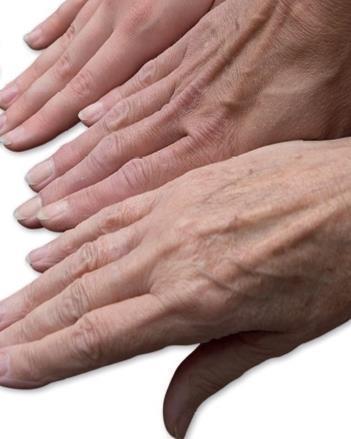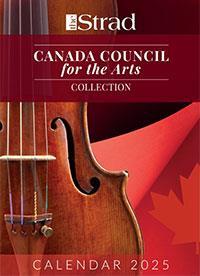In an article from our archive, former Minnesota Orchestra principal cellist Janet Horvath introduces a concept that might help you play better for longer

Discover more Featured Stories like this in The Strad Playing Hub
When we have suffered repeated injury during our playing careers, we may reach what the noted physical therapist Jonathan Reynolds calls maximum exposure. This is the point at which a person’s muscles, tendons, ligaments and tissue have reached the limit of their capabilities. It is at this point that we might become chronically injured or suffer from pervasive pain and fatigue. It is not uncommon for significant stress and trauma to occur to soft tissue, resulting in tissue destruction and loss of function.
Each musician has a different maximum exposure or tissue tolerance. Our physical limit and injury susceptibility varies according to our age, sex, genetic make-up, fitness level, body size, build and pre-existing medical conditions. Tissue tolerance is also affected by our playing style. If you play in an intense, macho style, you are more at risk. Our work schedules are also a contributing factor: the more we run from concert to concert, the less recovery time we allow our bodies. Another issue is our injury history, especially if we have not allowed proper time for previous injuries to heal.
The general term for these kinds of injuries is overuse. Physical medicine and rehabilitation specialist Jennine Speier explains: ‘Overuse covers many conditions including tendinitis, bursitis, tears, arthritis and nerve entrapments. Sustaining these injuries can contribute to an eventual breakdown of tissue.’ Overuse can result in microscopic injuries to muscle tissue, tendons and ligaments. This type of injury is normal with vigorous activity and usually results in repair, creation of more muscle fibres and increased strength. ‘However,’ Speier continues, ‘when the overuse is too great there is inflammation. The results of inflammation can be pain and also the eventual development of scar tissue. At this stage, pain will not resolve quickly and the musician can note heaviness, weakness and impaired performance. Rest, reduction of inflammation with medication, and a gradual return to playing are part of the treatment to promote recovery. But if recovery is not followed through, the scar tissue can itself become an obstacle to normal muscle function, resulting in further injury and breakdown of tissue.’
There are few athletes who continue beyond their thirties. Musicians, however, have much longer careers. Hence for musicians, staying at peak performance throughout several decades poses additional challenges. We must notice the subtle and not-so-subtle changes in our bodies so that we avoid injury.
In a musical environment, there are many factors that contribute to reaching one’s limits. These include high levels of tension, long rehearsals, stress, technical demands, fatigue, posture, and a mismatch between the player, their instrument and their chair. But the main culprit is simply the repetitive nature of playing music. We put stress on the same muscle groups every day as we perform repetitive movements, straining our muscles, tendons and ligaments. This initially causes fatigue, muscle imbalance, weakness and tightness, but without intervention it can lead to micro-trauma, inflammation and injury.
Some musicians, like some athletes, believe that more is better. But an abrupt change to practising harder, longer and with more intensity can quickly lead to overuse. Musicians often do not – or cannot – allow enough time for recovery and healing, resulting in chronic injury. Studies have shown that women are more vulnerable than men to injury, which may be due to anatomical differences such as their smaller body mass.
Read: Violinist David Juritz on overcoming a painful shoulder injury
Read: Classical musicians should play more sports
As we grow older, we must pay closer attention to these potential problems. Our bodies may become more prone to injury, in part because of changes to the muscles, bones, tendons and ligaments. As we age, our bones become less stable. Cartilage, the tissue that cushions the tips of the bones in our joints, tends to lose water, making joints more vulnerable to injury from repetitive motion and stress. Overuse can therefore contribute to our joints becoming less flexible and less resistant to wear and tear. Range of motion can be lost. The strength, size and endurance of muscle tissue may also erode.
Looking at the wider picture, we also lead busy lives. We try to deal with stresses such as ageing parents, growing children, and keeping up with the bills. We often don’t sleep well and we may not have the time to practise like we once did. Even if we are suffering from an injury, we might feel that we have to continue our work, and that we have no control over our gruelling and physically demanding schedules. Nevertheless, it is essential to be aware of the dangers, and there are simple preventative measures that we can take to reduce the risks of injury.
PREVENTATIVE MEASURES
1. Keep moving
After years of playing in the postures required by our instruments, asymmetrical body development may occur. Our resilience and capacity to recover may also decrease because we stop moving. Inactivity accelerates muscle and bone loss, and it may contribute to stiffness. Research indicates that we can reduce the long-term risk of osteoporosis by regularly performing weight-bearing exercises such as walking or weightlifting.
It is essential that musicians have good flexibility in order to avoid injuries connected with overuse. Good flexibility enables your body to align properly. Strengthening exercises and aerobic conditioning are very important in improving endurance. But you should consult a professional before you try any new exercise. If you feel pain or stiffness, a physical therapist or a trainer who understands musicians’ issues can help by creating a training regime to fit your needs and correct your body alignment, as well as alerting you to effective injury-prevention exercises. Yoga, Feldenkrais and Pilates are all disciplines that are safe for musicians of any age, and they are wonderful for circulation and flexibility.
2. Be prepared and stay in shape
More is not better: practise smarter, not harder. Our motions tend to be jerky when we don’t know what is coming up in the music. Plan fingerings and study the music – you will be more likely to maintain ease and flow in your body motions. If you have taken several days off, always get back into condition gradually. Try to be consistent with practice, so that your body is prepared. Do not increase your practice load abruptly if you are preparing for a major performance or competition.
3. Warm up slowly and thoroughly
Muscles must be actively moved in order to increase blood circulation and deliver a greater amount of oxygen and nutrition to cells. Moving slowly loosens tendons and the connective fascia tissue, allowing them to become more flexible and pliable. Warming up also generates a greater release of synovial fluid, allowing your bones to slide on each other with greater ease.
Read: The importance of body awareness in violin playing: Rachael Ridge
Read: 6 holistic warm-ups for violinists
Discover more Featured Stories like this in The Strad Playing Hub
The number one source for playing and teaching books, guides, CDs, calendars and back issues of the magazine.
In The Best of Technique you’ll discover the top playing tips of the world’s leading string players and teachers. It’s packed full of exercises for students, plus examples from the standard repertoire to show you how to integrate the technique into your playing.
In the second volume of The Strad’s Masterclass series, soloists including James Ehnes, Jennifer Koh, Philippe Graffin, Daniel Hope and Arabella Steinbacher give their thoughts on some of the greatest works in the string repertoire. Each has annotated the sheet music with their own bowings, fingerings and comments.
The Canada Council of the Arts’ Musical Instrument Bank is 40 years old in 2025. This year’s calendar celebrates some its treasures, including four instruments by Antonio Stradivari and priceless works by Montagnana, Gagliano, Pressenda and David Tecchler.












































No comments yet